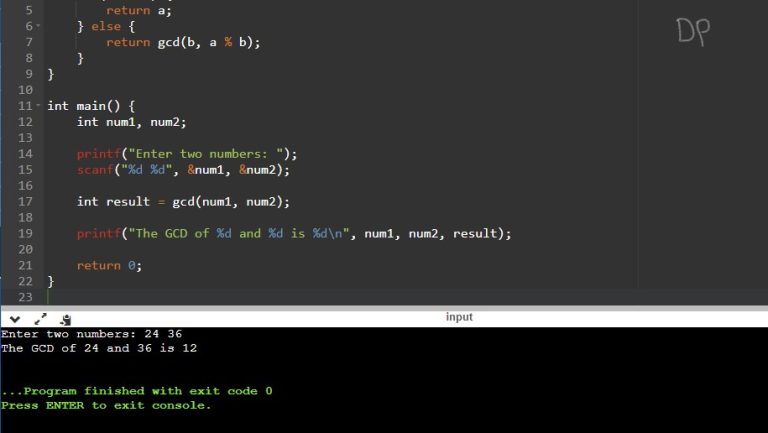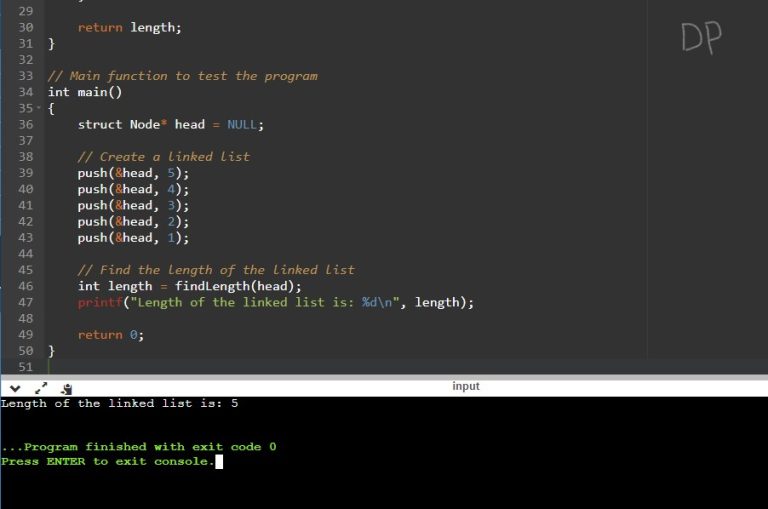This C program converts a binary number to its decimal equivalent using the power of 2. It takes a binary number as input and returns the corresponding decimal number.
Problem statement
Write a C program to convert a binary number to its decimal equivalent.
C Program to Convert Binary to Decimal
#include <stdio.h>
int binaryToDecimal(long long binaryNumber);
int main() {
long long binaryNumber;
printf("Binary to Decimal Converter\n");
printf("Enter a binary number: ");
scanf("%lld", &binaryNumber);
int decimalNumber = binaryToDecimal(binaryNumber);
printf("Decimal equivalent: %d\n", decimalNumber);
return 0;
}
int binaryToDecimal(long long binaryNumber) {
int decimalNumber = 0, i = 0, remainder;
while (binaryNumber != 0) {
remainder = binaryNumber % 10;
binaryNumber /= 10;
decimalNumber += remainder * (1 << i);
++i;
}
return decimalNumber;
}
How it works?
- The program prompts the user to enter a binary number.
- The
binary To Decimalfunction is called, passing the binary number as an argument. - Inside the
binary To Decimalfunction, the decimal number is initialized to 0, andi(power of 2) is initialized to 0. - The binary number is processed digit by digit in a loop until it becomes 0.
- In each iteration, the rightmost digit (
remainder) of the binary number is extracted using the modulus operator%. - The binary number is divided by 10 to remove the rightmost digit.
- The decimal number is updated by adding
remainder * (1 << i)(which is equivalent toremainder * 2^i) to it. iis incremented by 1 to move to the next power of 2.- The process continues until the binary number becomes 0.
- Finally, the decimal number is returned.
- The decimal number is printed as the output.
Input/Output




